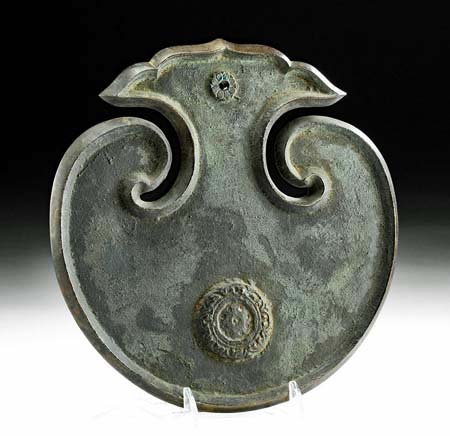
Owner: HWMC
Catalogue #: AS-IDST-55-14
Gongs
Japan ‘Umpan’ Gong (Edo Period)
Japan
Japanese
Bronze
Length: 8.5 in; Width: 8.5 in; Depth: .5 in
Early-Mid 19th century (Edo Period: Between 1603-1867)
Idiophones – Struck Idiophones – Gongs
This is a bronze gong known as an umpan (“cloud plate”) with its characteristic curled tips and a tapering neck which represent a stylized cloud. It comes from Japan, during the Edo period, ca. early to mid-19th century. It was used in a Zen temple or monastery. The daily lives of Zen monks are directed by the sounds made by instruments such as this umpan and other types of gongs. Different tones and sounds made by these instruments gave meaning to and signaled the passing of the day; especially when there were vows of silence – talking was not permitted but these gongs could break the silence. This umpan is a flat bronze gong which is rung either at mealtime or to signal events such as a call to the conclusion of zazen (seated meditation).
A suspension hole is pierced through the top center with raised lotus petals encircling the opening. A relief medallion on both sides consists of an eight spoked wheel of Dharma (symbol of Buddhism).
